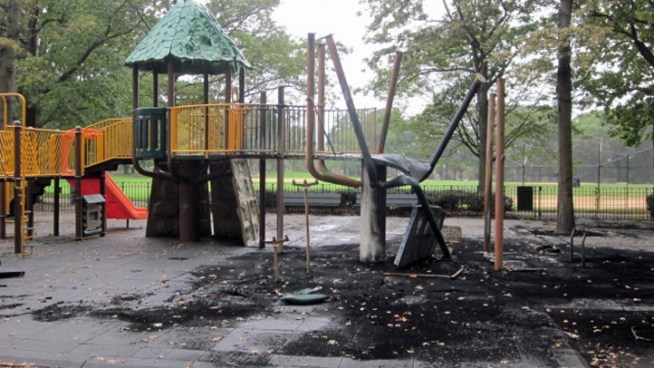
City-Wide
When Mayor Michael Bloomberg unveiled PlaNYC in 2007, it was seen as a visionary proposal that would likely define his legacy. With the city’s population expected to rise from 8 million to 9 million by 2030, the catch-all initiative sought to make the city greener and more livable by increasing the number of mass-transit options, energy-efficient buildings, and parks, among other aspects. Many goals were designed to come to fruition long after Bloomberg left office in 2013, and in many ways, PlaNYC’s scope evoked Robert Moses, sans the emphasis on cars.
So how is PlaNYC faring four years after its launch? Opinions vary. Numerous aspects of the scheme, particularly its sustainability initiatives, are already visible across the city, in the form of new high-speed buses, stricter energy standards, and eco-friendly vehicles—and they score great reviews. But there also are critics who say changes have been slow to roll out and don’t improve the fortunes of all New Yorkers equally, according to Architectural Record.
Tom Angotti, a professor of planning at Hunter College, takes issue with the general methodology of PlaNYC. It favors improving the lives of 1 million people who have yet to move to New York, he says, rather than the millions who are already here, many of whom are poor and need attention. Angotti notes that the plan was written by McKinsey and Company, a consulting firm that advises banks, pharmaceutical, and telecom companies, among others. “It’s an accountants’ approach to the city,” Angotti says, “not a planners’ approach.”
Signs of Progress
This past April, Mayor Michael Bloomberg released his first-ever update to the plan, expanding it to 132 initiatives from 127. That report, detailed in a 202-page document, also took stock of the progress so far. The city noted, for instance, that greenhouse gas emissions have fallen 13 percent below 2005 levels in part because of cleaner power generation, though the goal is to have them drop 30 percent below those levels by 2030.
Of the original initiatives, 97 percent have launched, says David Bragdon, director of New York’s Office of Long-Term Planning and Sustainability, which coordinates the implementation of PlaNYC. “The plan is moving as it should, from conceptual to implemental,” he adds. Bragdon, who oversaw a regional planning agency in Portland, Oregon, before taking his current job in 2010, says New York is already cutting edge in its green efforts. “There is more happening here in terms of tangible accomplishments than almost anywhere else” in the United States, he says.
There are fans outside the mayor’s office, too. “The short answer is, most things are on track,” says Andy Darrell, the New York-based director of the global Environmental Defense Fund, which advocates market-based solutions to environmental problems. Among the plan’s greatest achievements, he says, is a recent effort to phase out No. 4 and No. 6 heating oils, which are pollutants. Plus, about 500,000 of 1 million promised trees have been planted.
Darrell also likes the introduction of rapid transit buses along First and Second Avenues in Manhattan, and Fordham Avenue in the Bronx, with others planned. The buses hopefully encourage people to drive less. Overall, the plan “performing very well on the greenhouse-gas front,” Darrell says.
Critical Perspectives
Involving 27 city agencies, PlaNYC enjoyed the support of 150 environmental, labor and business groups when it was introduced. Since it touches so many different parties – and since public funds for the multi-billion-dollar plan could potentially flow to numerous people – it can be difficult finding impartial analysts.
Darrell, for one, serves on the mayor’s Sustainability Advisory board, though he claims he is an independent and that his organization has never received funding from the city or mayor. To prove his objectivity, he notes PlaNYC’s failures: An effort to impose congestion pricing on Midtown Manhattan—to charge drivers more to travel through some neighborhoods at certain times a day, which would have funded later aspects of PlaNYC—was ultimately killed by state lawmakers. (For his part, Bragdon argues that the plan could be revived under Governor Cuomo, who he believes will support it.)
Other setbacks include a scuttled requirement that all taxis be hybrid models. Courts ruled last winter that the proposed law was unconstitutional because cities don’t have the power to regulate emissions; that power lies with the federal government.
Some detractors point out that PlaNYC hasn’t moved fast enough. For example, PlaNYC calls for “building or preserving” 165,000 affordable homes by 2017; so far, it’s created only 64,000, or less than half, according to the April report.
Recession’s Impact
To be fair, the recession, which hit soon after PlaNYC’s debut, has gummed up the works. The city sought to spruce up 290 school playgrounds and turn them into de facto weekend parks, so all New Yorkers could be a 10-minute walk away from green space. But in 2009, the sputtering economy killed plans for 24 of those playgrounds, the report shows.
“The challenges are not the plan itself, but more so the financial landscape to get the projects done,” says Bernell Grier, chief executive of the Neighborhood Housing Services of New York City, a nonprofit affordable housing group. Others are harsher. Geoffrey Croft, president of NYC Parks Advocates, a watchdog group, says that of the 200 acres of parkland that has been added toward the 4,700 acres promised, much is inferior.
Dreier-Offerman/Calvert Vaux Park in Bensonhurst, Brooklyn, for example, was supposed to feature six soccer fields; it only has two, and they’re synthetic turf, not grass, “which won’t clean the air and gets too hot in the summer to play on,” says Croft. Plus, he adds, “the city doesn’t want to spend money maintaining things.”
Read More:
A Critical Look at PlaNYC, Four Years After Its Launch
Mayor Bloomberg introduced his sweeping initiative to green the city and improve living conditions for all New Yorkers. Is the plan working?
Architectural Record - September 29, 2011 In 2007 - By C. J. Hughes







